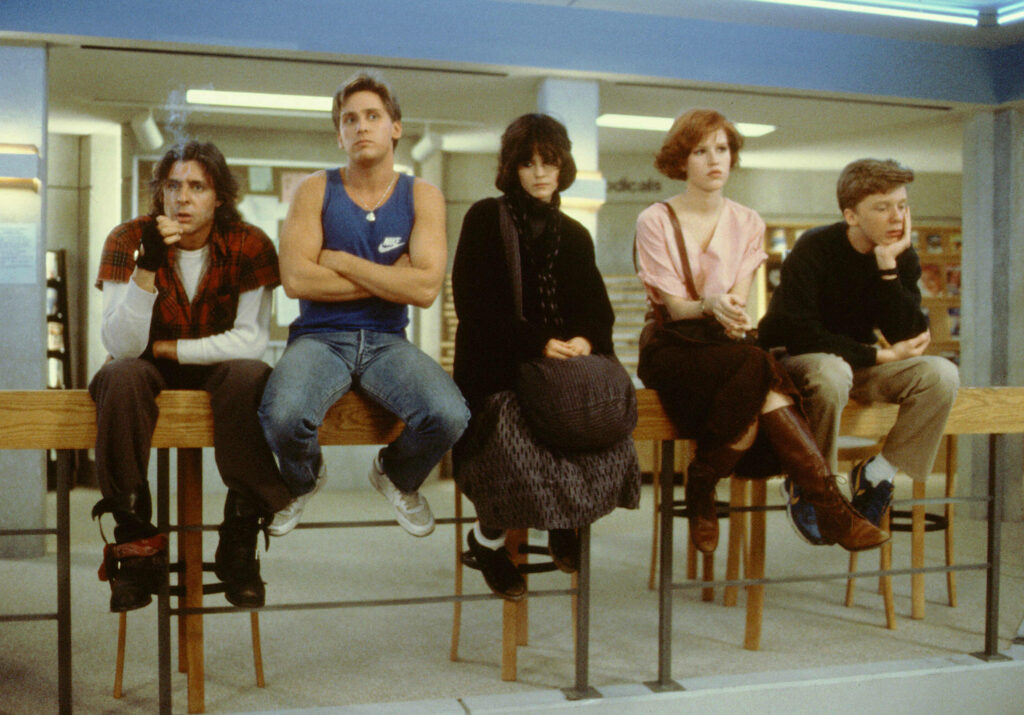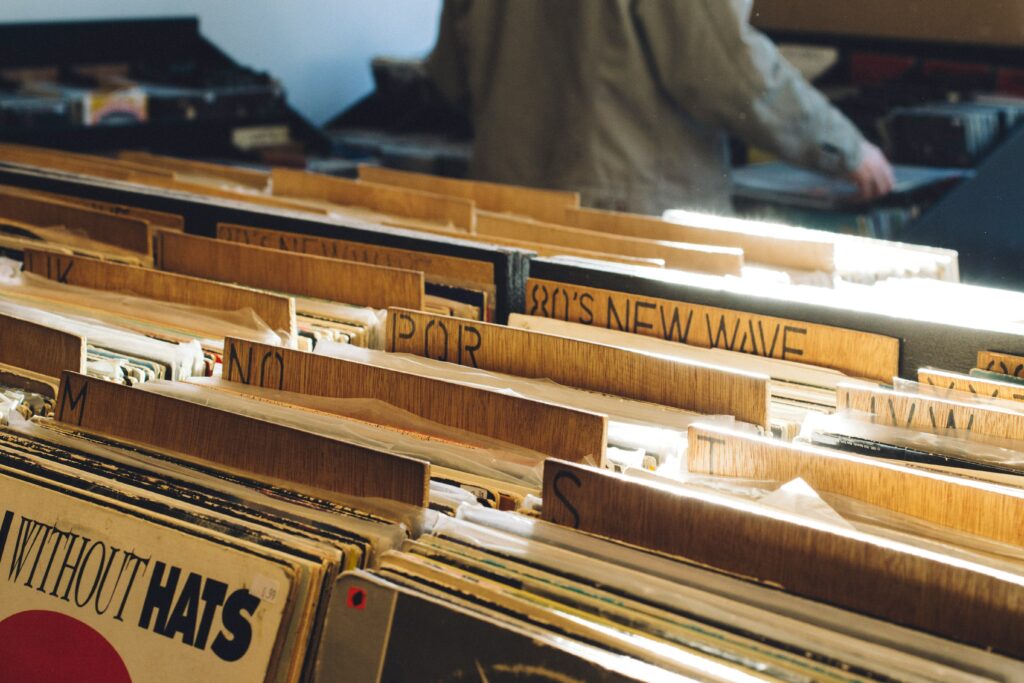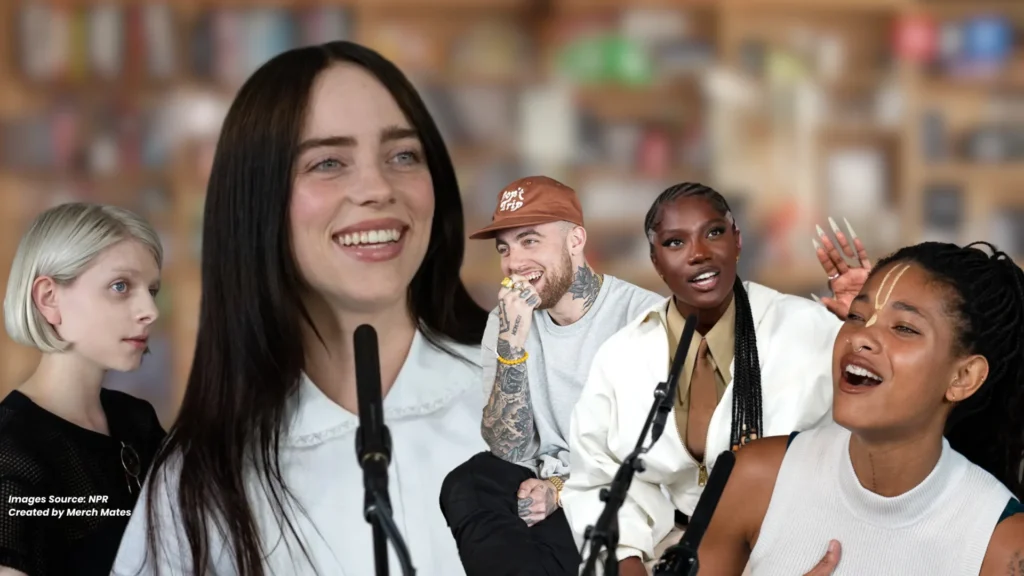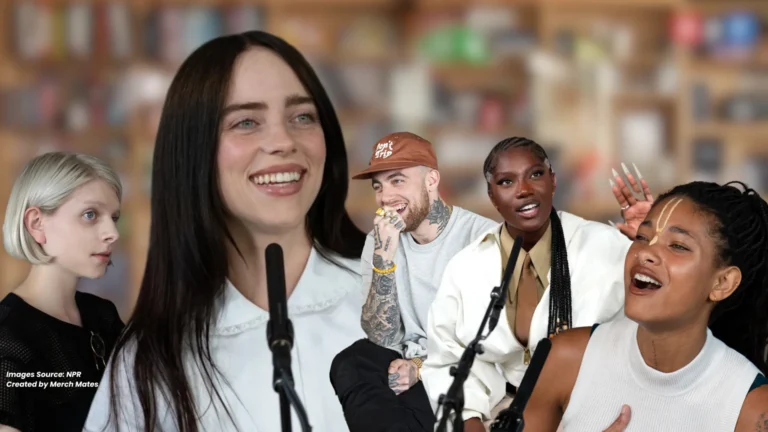The 1980s were a transformative decade for music, marked by a blend of traditional rock, the emergence of new wave, and the advent of synthesised pop. This era ushered in an eclectic mix of sounds, fashion, and iconic videos that solidified its place in music history. With technological advancements, the introduction of the synthesiser brought a futuristic dimension to the soundscapes of the decade, resonating with an audience eager for innovation and the next big thing.
Artists like Michael Jackson and Madonna became household names due to their extensive hits catalogue and savvy exploitation of the burgeoning music video scene on channels like MTV. The 1980s also saw legendary bands such as Queen and U2 solidify their status with powerful anthems that remain enduring classics. Music in this decade was not only about catchy hooks and electronic beats, but it also became a powerful medium for self-expression and political commentary, with artists using their platforms to address social issues.
The influence of 1980s music extends to the present day, as its unique aesthetic and sound continue to be sampled, covered, and celebrated in various forms of media. This culturally rich period produced a vast array of memorable songs and albums that have achieved timeless status, keeping the spirit of the 80s alive through radio waves, streaming platforms, and revival concerts worldwide.
Origins of 80s Music
The sonic landscape of the 1980s music was shaped by a melding of various genres from the previous decade and the birth of new electronic sounds. This section will explore the roots from which iconic 80s music stemmed.
Influence of 70s Music
The 1970s laid the groundwork for the quintessential sound of the 80s. Disco and punk are among the most influential genres from the ’70s that contributed to the emergence of 80s music. The guitar-driven aesthetics of punk clashed with disco’s rhythmic and dance-centric elements, paving the way for a range of sub-genres in the following decade. The eclectic styles of artists like David Bowie and bands such as Fleetwood Mac also played a key role, as they experimented with new sounds that transcended traditional genre boundaries.
Development of New Wave
New Wave emerged as a direct descendant of the punk and electronic music of the 1970s, characterised by its synthesis of the two. This genre was a significant shift from the rawness of punk to a more polished and radio-friendly format. Bands like Blondie and Talking Heads utilised syncopated beats and minimalist lyrics reminiscent of punk but delivered with the newer, smoother production techniques that would define the 80s sound.
Rise of Synth-Pop
Synth-pop represents the monumental shift towards electronic music in the 1980s. It leveraged synthesizers and drum machines, creating a sonic foundation previously unexplored in mainstream pop. Artists like Gary Numan and groups like Depeche Mode were among the early adopters, deriving their tones from the modernity of the synthesizer, which offered a wide palette of sounds, from stark and industrial to lush and melodic. The genre’s broad appeal laid the groundwork for its ubiquitous presence throughout the decade.
Iconic Artists and Bands
The 1980s birthed diverse music legends whose influence shaped the era’s sound. Encompassing a variety of genres, from pop to new wave, these artists and groups left an indelible mark on the music industry.
Michael Jackson
Michael Jackson, often called the “King of Pop,” revolutionised the music scene in the 1980s. His groundbreaking album Thriller remains one of the best-selling albums of all time, with hits like “Billie Jean” and “Beat It” demonstrating his profound impact on popular music and dance.
Madonna
Madonna, the “Queen of Pop,” became a cultural icon with her innovative music and unique style. She dominated the charts with albums like Like a Virgin and True Blue, earning a reputation for pushing the boundaries of pop music and female empowerment.
The Cure
The Cure emerged as one of the leading bands in the post-punk and new wave movements. Albums such as Disintegration displayed their distinctive sound, characterised by moody lyrics and gothic rock influences, securing their place in the annals of ’80s music history.
Duran Duran
Duran Duran were at the forefront of the new wave scene, known for synthesiser-driven tracks and visually arresting music videos. With catchy hits like “Hungry Like the Wolf” and “Rio,” they exemplified the glitzy aesthetics of the decade and remained staples on MTV.
Musical Innovation and Technology
The 1980s heralded groundbreaking advancements in musical technology, fundamentally changing the soundscape of pop music. These innovations not only shaped the music itself but also transformed how it was produced, distributed, and consumed.
Synthesisers and Drum Machines
Synthesisers and drum machines became cornerstones of the ’80s music scene, introducing a new palette of electronic sounds. The Yamaha DX7, a digital synthesiser, dominated the decade, influencing genres from pop to electronic music. Drum machines, like the Roland TR-808, also left an indelible mark, providing the iconic beats that drove countless hit songs.
Music Videos and MTV
MTV revolutionised the music industry, launching in 1981 as a platform for music videos, making visuals an integral part of the musical experience. This shift emphasised the importance of an artist’s image and storytelling in videos, elevating musicians like Michael Jackson and Madonna to iconic statuses due in part to their innovative and engaging videos.
Digital Recording Techniques
Digital recording techniques surged in the ’80s, enhancing the clarity and editing capabilities of studio recordings. Multitrack recording systems and digital audio tape (DAT) became standard in the industry, allowing for more complex and polished productions. These technologies opened up new creative possibilities and streamlined the recording process.
Genres and Styles
The 1980s saw an explosion of musical diversity with the rise of various genres that defined the decade’s soundscape. This section explores the prominent styles of the time, from the synthesiser-heavy pop and dance music to the hard-hitting notes of rock and glam metal, as well as the nascent scenes of hip-hop and rap, rounded out by the innovative sounds of alternative and indie.
Pop and Dance Music
The ’80s were synonymous with the development of pop and dance music, marking a period of significant creative experimentation. Synthesisers and drum machines became staples, leading to the birth of numerous pop sub-genres. Notable among these were dance-pop, which incorporated upbeat rhythms suitable for clubs, and synth-pop, which featured electronic instruments and futuristic sounds.
Rock and Glam Metal
Rock music diversified into various sub-genres throughout the decade, with glam metal being among the most theatrical and commercially successful. Bands like Bon Jovi and Guns N’ Roses dominated the charts with their flamboyant style and anthemic tunes. The heavy guitar riffs, powerful vocals, and memorable solos made this style instantly recognisable.
Hip-Hop and Rap
Initially an underground movement, hip-hop and rap music burgeoned into a defining genre of the ’80s. Groups like Run DMC and Public Enemy pushed the boundaries with their lyrical prowess and social commentary. The art of sampling and scratching on turntables became iconic, laying the groundwork for hip-hop’s future evolution.
Alternative and Indie
Moving away from mainstream genres, the ’80s also saw the emergence of alternative and indie music. Artists and bands in this space were known for their independent label releases and diverse soundscapes that ranged from post-punk to gothic rock. They often approached songwriting with a do-it-yourself ethic, greatly contributing to the music’s authenticity and appeal.
Fashion and Culture
The 1980s music scene was as much about the visuals as the sound, with fashion serving as the perfect expression of the era’s diverse cultures and musical genres.
Clothing and Appearance
In the 1980s, clothing became a form of self-expression, with the music scene directly influencing style. New Romantic movement icons such as Boy George and bands like Spandau Ballet brought flamboyant outfits, with frilly shirts and makeup transcending gender norms. For many, the quintessential ’80s look included shoulder pads, leg warmers, and bold patterns, all signifying the era’s penchant for excess. Acid-wash jeans and neon colours epitomised the vibrant defiance of mainstream culture.
Youth Subcultures
The ’80s saw the rise of distinctive youth subcultures, each aligning with specific musical genres. Punks maintained their ethos with studded leather jackets and Mohawks, signalling their contempt for conformity. Goths, influenced by bands like The Cure, cultivated a dark, romantic aesthetic. At the same time, hip-hop culture brought voluminous tracksuits and bucket hats to the forefront. These subcultures had a significant impact, shaping music and fashion.
Concerts and Festivals
Concerts and festivals of the ’80s were not just musical events but spectacular fashion shows. Madonna’s Virgin Tour set the trend for wearing underwear as outerwear, accessorised with lace gloves and pearl necklaces. Michael Jackson’s signature sequin glove became emblematic of his performances. The festival scene, particularly events like Live Aid, showcased a melting pot of styles, as fans often dressed to emulate their musical idols, resulting in a vibrant collage of the decade’s fashion landscape.
Legacy of 80s Music
The 1980s witnessed a remarkable fusion of genres and styles, from synth-pop to hard rock, shaping the sounds of today and inspiring waves of nostalgia and revivals in modern culture.
Influence on Contemporary Music
Contemporary music owes much to the synthetic textures and pioneering production techniques first popularised in the 1980s. Artists today frequently draw on the electronic beats of 80s bands like Depeche Mode and New Order, weaving these elements into current pop, electronica, and hip-hop tracks. Moreover, the guitar riffs and anthemic power ballads crafted by bands such as Guns N’ Roses continue to be touchstones for modern rock musicians.
Revival and Nostalgia
There’s a palpable nostalgia for the 80s, manifesting in entertainment and fashion but markedly so in the music industry. Numerous bands and solo artists have embarked on reunion tours, often to sold-out audiences, while current artists cover or sample classic tracks from the era. This phenomenon extends to festivals dedicated to 80s music, underlining the decade’s lasting appeal and its memorable contribution to music history.
Notable 80s Albums
The 1980s produced a rich tapestry of music; some albums have stood the test of time to become iconic. Thriller by Michael Jackson, released in 1982, is often identified as the world’s best-selling album of the decade, brimming with hits like “Billie Jean” and “Beat It.” Its blend of pop, post-disco, rock, and funk showcased Jackson’s versatility and innovation.
The rise of British music was significant in the 80s, with The Queen is Dead by The Smiths (1986) being a seminal album. The band’s jangly guitar work and introspective lyrics have negatively influenced indie and alternative music scenes. Another monumental British contribution was Hounds of Love (1985) by Kate Bush, offering a showcase of her eclectic style and experimental music production.
| Year | Artist | Album |
|---|---|---|
| 1987 | Guns N’ Roses | Appetite for Destruction |
| 1986 | Metallica | Master of Puppets |
| 1984 | Prince | Purple Rain |
Guns N’ Roses’ debut, Appetite for Destruction, brought forth raw energy and aggression with standout tracks like “Sweet Child o’ Mine.” Metallica’s Master of Puppets became a defining thrash metal landmark, delivering complex guitar arrangements and dark themes. Prince’s Purple Rain, which doubled as a soundtrack to the film of the same name, displayed his prodigious talent and solidified his place as a pop and R&B powerhouse.
These albums represent just a fraction of the era’s musical wealth, illustrating the diversity and innovation that defined 1980s music.
Impact on Media and Film

1980s music played a significant role in media and film development, particularly through music videos and film soundtracks. The decade witnessed an explosion of music television, with MTV launching in 1981, providing a platform for artists to broadcast visually creative representations of their work.
Music Videos: The advent of MTV pioneered the era of music videos as a form of storytelling and artistic expression. Michael Jackson’s “Thriller” set a new standard with its elaborate narrative and production quality, transforming music videos into must-see entertainment.
Film Soundtracks: Films from the ’80s often featured synthesiser-driven scores that have become iconic. Giorgio Moroder’s compositions, particularly for the film Midnight Express, influenced the soundscape of ’80s cinema – an impact that resonates in contemporary films employing retro soundtracks.
Influence on Current Media:
- Advertisements: Copying ’80s aesthetics to evoke nostalgia.
- Television: Reboots of 1980s series like “The Equalizer” appeal to both original fans and new audiences.
- Movies: The use of ’80s music in modern movie soundtracks as a homage to that culture-rich era.
Each aspect showcases the deep-rooted influence that 1980s music holds over current media and film and how it has shaped modern entertainment. The era’s pop culture continues to infuse today’s media, proving its enduring appeal and its unparalleled contribution to the art of film and media.
Critical Reception and Reviews
During the 1980s, the musical landscape was diverse, and the critical reception of various genres and artists varied significantly. Critics’ opinions played a substantial role in shaping public perception and sometimes the commercial success of records.
Synthpop and New Wave: Bands like Duran Duran and Depeche Mode often received mixed reviews. Some critics saw them as the epitome of the decade’s style-over-substance culture, while others praised them for their inventiveness and catchy melodies.
Rock and Metal: Bands like Guns N’ Roses rose to fame with a raw sound that received positive critical acclaim. They were often regarded as a return to the roots of rock n’ roll with an edgy, contemporary twist. In contrast, mainstream critics sometimes dismissed heavy metal, yet it maintained a dedicated following.
Hip-Hop: Initially, hip-hop was largely misunderstood by mainstream media, but groups like Run-DMC received favourable reviews for their groundbreaking work, which helped hip-hop gain recognition and respect as an influential musical genre.
Pop Icons:
- Michael Jackson: Lauded as the “King of Pop,” his album “Thriller” received universal critical acclaim for its innovation and mass appeal.
- Madonna: She faced criticism for her provocative image but was simultaneously praised for her catchy pop anthems and influence on female empowerment in music.
A study was conducted regarding the politics surrounding the reception of new music in the 1970s and 1980s, revealing the dynamic between music, critics, and politics of the era.
While some artists were buoyed by critical acclaim, others found their work subject to harsh scrutiny. Despite this, many albums now considered classics initially endured a cool reception, only to be vindicated by time and lasting fan appreciation.
Frequently Asked Questions
The 1980s music landscape was dominated by a range of artists and genres that left a formidable legacy. This section addresses some of the most pertinent questions regarding the era.
Which artists dominated the music charts in the 1980s?
Artists like Michael Jackson, Madonna, and Prince frequently topped the music charts through the 1980s, earning the decade its reputation for birthing pop icons. Bands such as U2 and Bon Jovi also saw substantial success, contributing to the eclectic nature of the decade’s chart-toppers.
What genres defined the 1980s music scene?
The 1980s saw the rise of distinct genres like synth-pop, hair metal, hip-hop, and post-punk. The innovative use of synthesizers propelled the era into the future, creating a sound instantly recognisable as quintessentially ’80s.
Can you name some iconic long-duration tracks from the 1980s?
Songs that extended the typical playtime and became iconic included tracks like “Blue Monday” by New Order and “Thriller” by Michael Jackson, both of which exceeded the normal range of song lengths, captivating audiences with their compelling and dance-worthy rhythms.
What are some standout tracks performed by female artists from the 1980s?
Female artists made waves with memorable tracks, including Whitney Houston’s “I Wanna Dance with Somebody” and Cindy Lauper’s “Girls Just Want to Have Fun,” embodying the spirited pop sound of the ’80s.
Which 1980s songs should be included in a quintessential decade playlist?
A quintessential ’80s playlist might feature hits like “Don’t You (Forget About Me)” by Simple Minds, “Livin’ on a Prayer” by Bon Jovi, and “Sweet Child o’ Mine” by Guns N’ Roses—tracks that defined a generation and the sonic identity of the decade.
What are the most memorable music videos from the 1980s era?
The 1980s era was a golden age for music videos, with Peter Gabriel’s “Sledgehammer” and Michael Jackson’s “Thriller” setting unprecedented standards for production value, storytelling, and choreography.









